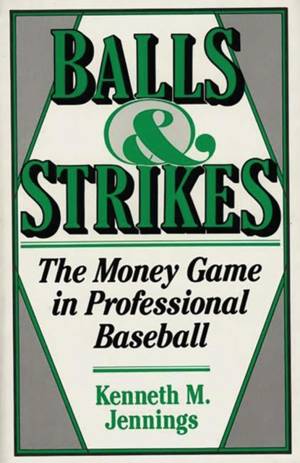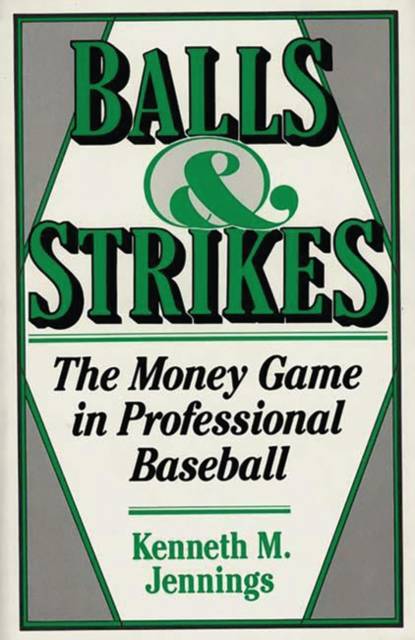
- Retrait gratuit dans votre magasin Club
- 7.000.000 titres dans notre catalogue
- Payer en toute sécurité
- Toujours un magasin près de chez vous
- Retrait gratuit dans votre magasin Club
- 7.000.000 titres dans notre catalogue
- Payer en toute sécurité
- Toujours un magasin près de chez vous
161,45 €
+ 322 points
Description
Impressively researched and well written, this valuable study by a business professor at the Universiy of North Florida. . . traces the erosion of the reserve clause and the rise of arbitration in salary disputes, examining the participants in negotiations--players, owners, managers, agents, even commissoners--and showing the stake each has in the money game. Many striking points are made, i.e., there is no discrimination in salaries of minority players and there is little relationship between pay and performance. Publishers Weekly
Jennings . . . gives a detailed account of collective bargaining in baseball during the last 25 years, leading up to the owners' lockout this year. He discusses the participants on both sides and how disunity among the club owners has contributed to the union's ability to achieve large bargaining gains. He also deals with salary arbitration and how it has been used to settle pay disputes, noting that it can resemble 'a high-stakes crapshoot' that leaves management incapable of controlling a team's payroll costs. For aficionados of the sport, this book provides clarifying insight into the complicated issues of baseball's labor relations and offers fascinating anecdotes and a shrewd commentary on the diverse and colorful personalities involved.New York Times Book Review Kenneth M. Jennings examines union-management relations in professional baseball, bringing together all the information the sports fan needs to follow the issues surrounding player-management arbitration in this unique industry. Covering the history of collective bargaining action in baseball from 1869 to the 1990 season, this book examines the issues that influence those high-profile player-management-owner negotiations. Balls and Strikes reveals: how in recent years the Major League Baseball Players' Association (MLBPA) has successfully parlayed owner disunity into substantial gains for its members; that baseball, in a statistical sense, surprisingly exhibits little discrimination against black and Hispanic players; how there is very little relationship between pay and performance in professional baseball. Baseball fans and sports journalists as well as professionals in management and labor relations, will find Balls and Strikes a fresh and exciting look at America's favorite pastime. Balls and Strikes presents the confrontations and relationships between players and management from the perspective of several hundred collective bargaining participants--the union and management officials who negotiate the labor agreement and the players who must approve and live with it. Kenneth M. Jennings derives his perspective from a variety of media sources, related biographies, autobiographies, and articles. The result is a highly readable book about owners, commissioners, agents, the media, manager-player relations, player pressures including drug and alcohol problems, race and ethnic issues, and player mobility and salaries. The book discusses the history of collective bargaining action in baseball from 1869 to 1966; the year Marvin Miller became president of the MLBPA, through the 1970s and Miller's successful bargaining efforts, into the 1980s and the opening of the 1990 season. Balls and Strikes discusses key participants in the collective bargaining process--owners, agents, the media, managers, and players--and concludes with a look at contemporary industrial relations issues in professional baseball: drug and alcohol abuse; racial discrimination; and the relationship between pay and performance.
Spécifications
Parties prenantes
- Auteur(s) :
- Editeur:
Contenu
- Nombre de pages :
- 283
- Langue:
- Anglais
Caractéristiques
- EAN:
- 9780275934415
- Date de parution :
- 15-02-90
- Format:
- Livre relié
- Format numérique:
- Genaaid
- Dimensions :
- 165 mm x 243 mm
- Poids :
- 644 g







